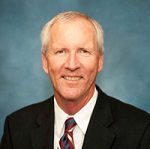 Business leaders have long recognized the value of taking at least a measure of responsibility for their employees’ well-being. From basic amenities like health insurance to elaborate wellness programs, helping employees stay healthy has evolved from an exclusive benefit for executives to a fundamental strategy for bolstering business success.
Business leaders have long recognized the value of taking at least a measure of responsibility for their employees’ well-being. From basic amenities like health insurance to elaborate wellness programs, helping employees stay healthy has evolved from an exclusive benefit for executives to a fundamental strategy for bolstering business success.
Traditionally, those efforts have been inward-looking. Employers have expanded offerings to their employees over the years, but they rarely extended benefits beyond immediate family members. But times are changing as employers increasingly recognize the benefits of looking beyond office walls in their efforts to improve their own culture of well-being.
There is certainly room for improvement in community health. It is well known that the United States outspends every other country on healthcare, but that spending is not reflected in our life expectancy. And yet, just 3% of U.S. health spending goes to prevention, while 75% goes to treating preventable conditions. We are spending time and money treating illnesses that should never affect us in the first place, and our health is suffering as a result.
That poor health can pack a punch against an otherwise robust bottom line for companies of all sizes, and many business leaders have taken the view that the best way to change this paradigm is by bridging the gap between workplace and community health and fostering a workplace and community culture that values prevention and well-being.
“It is more likely an organization will make community health a priority when health is a priority within that company’s own culture.”
6 deciding factors for business leaders
Moving the needle on community health is no small job. Some experts have called creating a community culture of health one of the most pervasive challenges of our time, and making meaningful progress will require action on a variety of fronts. Government agencies and non-profit organizations have traditionally led the way when it comes to community-health efforts, but while they have seen their share of success, there is room to do more. Employers are uniquely positioned to expand the influence of these efforts.
Doing so will require a clear sense of priorities. Whether you are the executive being approached to participate in a community-based initiative, or you are a community organizer leading the charge on a collaborative effort, you will benefit from understanding the latest research into what makes employer-community health initiatives successful.
There are guideposts that can help show the way. One new report identifies the 20 community-health topics that are most significant to employers across the country. Those topics range from tangible concerns — how well a physical environment supports healthy lifestyles — to more ephemeral matters like emotional health. All of these factors play a role in the health of a community, and all present employers with an opportunity to make meaningful changes.
Because many of these elements are interconnected, projects to address one or more element should be thoroughly considered. For example, the level of fitness-related activities in a community will vary significantly depending on the degree to which the physical environment supports being active. Paved and/or lighted walking and biking trails, parks, walkable shopping and dining areas, and community lakes can encourage residents of all ages to be more active year round.
To help your organization and leadership team identify promising opportunities and determine where to invest your time and resources, the following six key factors have been identified by employers who have succeeded in community-health collaboration as the key elements to look for when evaluating opportunities:
For any business leader interested in playing an active role in community health, applying these priorities as a filter can aid in your decision making and help you focus on what you want to accomplish through your investment in community health. By fostering a common understanding of both priorities for improving community health and the elements that should be present in an effort to address those priorities, we can create a foundation and process that will benefit your company, your employees, and your community.

Chief Executive Group exists to improve the performance of U.S. CEOs, senior executives and public-company directors, helping you grow your companies, build your communities and strengthen society. Learn more at chiefexecutivegroup.com.
0

1:00 - 5:00 pm
Over 70% of Executives Surveyed Agree: Many Strategic Planning Efforts Lack Systematic Approach Tips for Enhancing Your Strategic Planning Process
Executives expressed frustration with their current strategic planning process. Issues include:
Steve Rutan and Denise Harrison have put together an afternoon workshop that will provide the tools you need to address these concerns. They have worked with hundreds of executives to develop a systematic approach that will enable your team to make better decisions during strategic planning. Steve and Denise will walk you through exercises for prioritizing your lists and steps that will reset and reinvigorate your process. This will be a hands-on workshop that will enable you to think about your business as you use the tools that are being presented. If you are ready for a Strategic Planning tune-up, select this workshop in your registration form. The additional fee of $695 will be added to your total.

2:00 - 5:00 pm
Female leaders face the same issues all leaders do, but they often face additional challenges too. In this peer session, we will facilitate a discussion of best practices and how to overcome common barriers to help women leaders be more effective within and outside their organizations.
Limited space available.

10:30 - 5:00 pm
General’s Retreat at Hermitage Golf Course
Sponsored by UBS
General’s Retreat, built in 1986 with architect Gary Roger Baird, has been voted the “Best Golf Course in Nashville” and is a “must play” when visiting the Nashville, Tennessee area. With the beautiful setting along the Cumberland River, golfers of all capabilities will thoroughly enjoy the golf, scenery and hospitality.
The golf outing fee includes transportation to and from the hotel, greens/cart fees, use of practice facilities, and boxed lunch. The bus will leave the hotel at 10:30 am for a noon shotgun start and return to the hotel after the cocktail reception following the completion of the round.